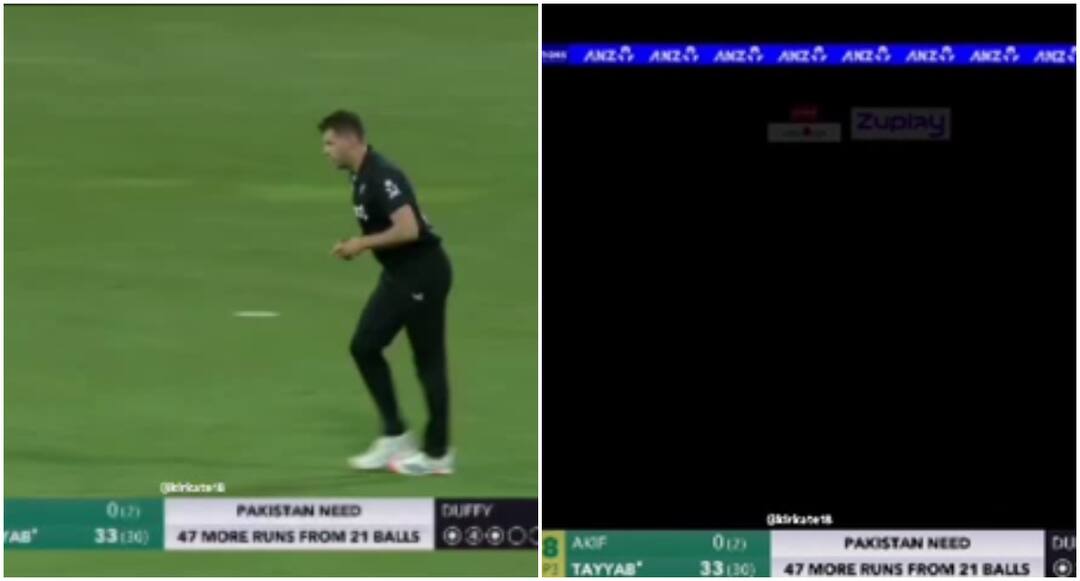Shaun Pollock's wobble-seam ball

When it came to a certain delivery, the South African inspired a number of bowlers to follow his leadSeam movement is the biggest challenge for batters. They get just under half a second from release to interception. You can imagine the jeopardy caused if the ball also changes direction significantly after pitching. Reacting to such movement off the pitch is largely guesswork by batters, experted over years of practice and intuition. But you also learn to pick up on small cues to prepare for a certain direction of seam movement: the angle of release, the seam orientation, swing in the air.The ball can still move the wrong way after pitching, but more often than not you have read the indicators and are prepared for one kind of movement. The wobble-seam ball, though, throws a spanner in those works. It is bowled with what coaches call a "dirty seam", which wobbles this way and that in the air. Batters have no way to tell which way the ball will dart after pitching. When bowlers themselves don't know, what chance do batters stand?Tim Southee, a genuine outswing bowler, uses the wobble-seam ball to add an element of unpredictability. So does Mohammed Siraj. Vernon Philander played havoc with it on juicy South African tracks. Mohammad Asif used it skilfully. James Anderson elevated it to another level by combining it with swing in the air. Remember the first ball Virat Kohli faced in England in 2021? It swung in in the air with a wobbly seam, and then nipped away to take the edge.It is with Stuart Broad, however, that a genuine link exists between the modern wobble-seam ball and its oldest recorded regular exponent. In the Boxing Day Test in Durban in 2009, Broad bowled Jacques Kallis shouldering arms. Turns out Broad had been watching tapes of Shaun Pollock, a similarly tall seam bowler."I noticed that Pollock seemed to get the ball to 'talk', or move around, when the seam was not perfectly bolt upright," Broad wrote in his column in the Daily Mail. "He just seemed to wobble it slightly and, on South African wickets, the ball would nip either way.Pollock lite: Kallis b Broad in Durban, 2009 Gareth Copley / © PA Photos/Getty Images"So I worked on just that with Ottis [Gibson, then England's bowling coach] in the nets before the second Test, tried to wobble the seam when I was bowling to Kallis in South Africa's second innings, and got one to nip back at him and take the top of his off stump. It was a brilliant moment."There might well have been bowlers who used the wobbly seam before him, but Pollock didn't know of any. He didn't learn how to bowl the delivery from anybody. In fact, he didn't even intend to bowl it when he first did. The seam came out dirty because he had a long delivery stride. Those with shorter strides can control the ball better and release it with a straight seam.For a while, Pollock strove to be more like other bowlers out of whose hands the seam came out beautifully straight, but soon he realised the wobbly seam gave him an advantage, denying batters a visual clue. When he went to England, Pollock found it easier to release the Dukes ball with a good seam, but realised that made it easier to play because of the visual clue.Viewers weren't as educated about cricket's arts during Pollock's day as they are today thanks to technology, but there exists a video of a pair of deliveries that sums up the perils of facing the wobble-seam ball. With the second new ball, in Bloemfontein in 2001, Pollock nips one away and the other in to bowl Virender Sehwag, who is well set on 105 in his debut Test. Both deliveries pitch on about the same spot. This might well be the oldest visual evidence of the wobble-seam doing its thing. Well before its time.Sidharth Monga is a senior writer at ESPNcricinfo© ESPN Sports Media Ltd.













